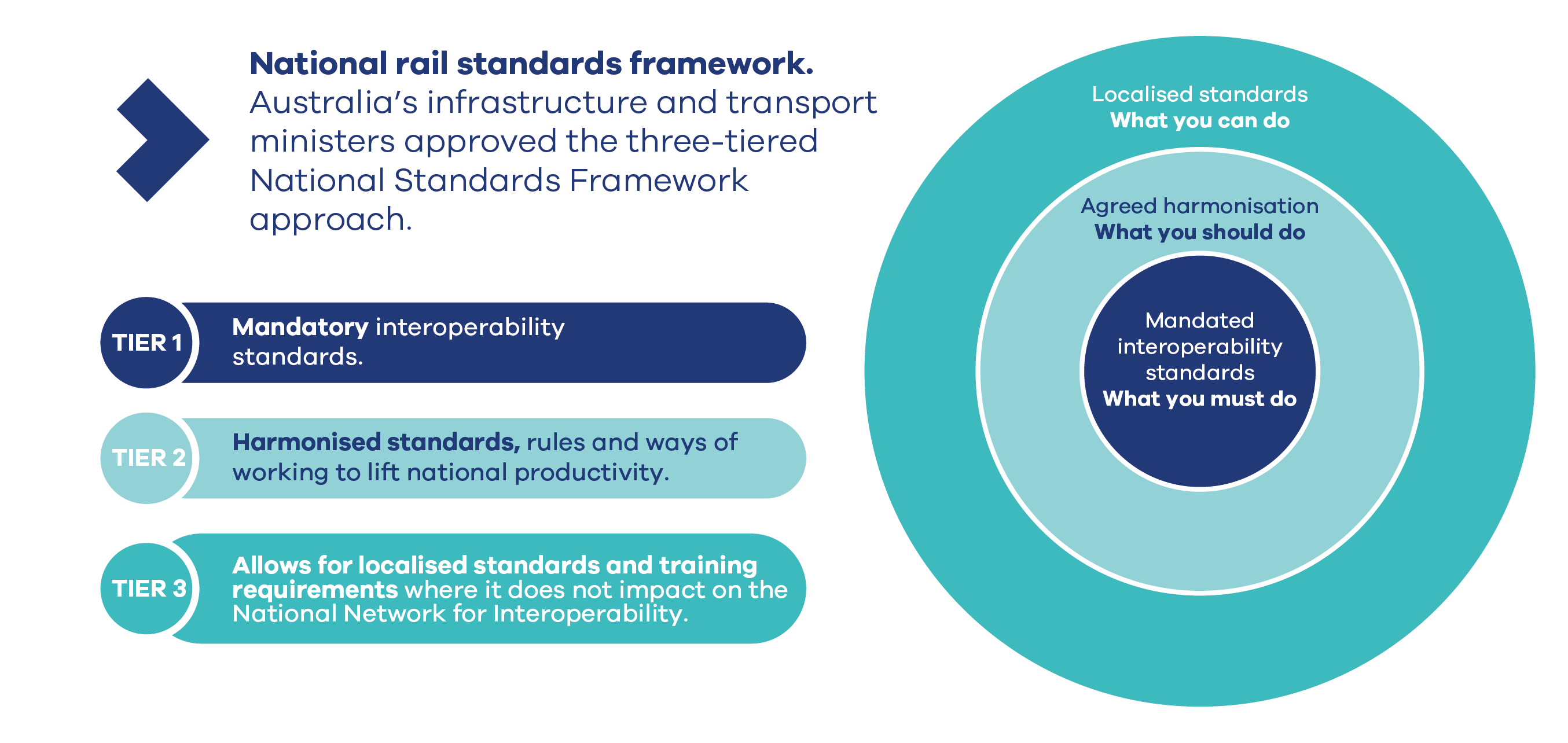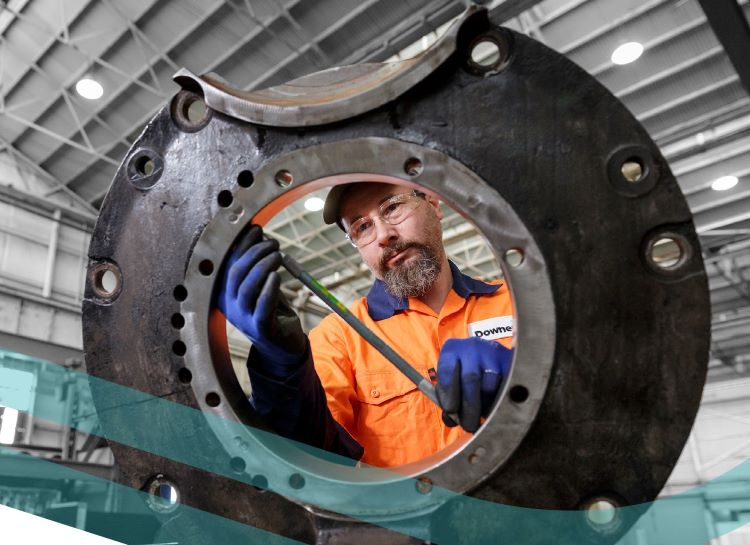National standards for a safer, more efficient rail system
Right now, Australia’s rail networks each have their own standards for technologies, trains, infrastructure, operating rules and worker training. The differences come at a huge cost to safety and limit the capacity and competitiveness of rail freight.
By taking a national approach to standards we are making sure that new signalling systems can talk to each other. So, it is safer for trains to move from one network to another. And we can get more trains running without building more tracks,
National standards will also make it simpler to get new trains approved to run on our networks. It means freight operators can move more goods with newer and safer trains that produce less emissions.
For the people who work in rail, operating rules and processes will be easier to understand as they will be more consistent across networks. Workers will no longer need to be re-trained and know different rules when they move across networks.
More standardised components will allow local manufacturers to scale up and make more parts here, creating new jobs in our regions and cities.
National Rail Standards Framework
Through the National Rail Action Plan (NRAP), the NTC is collaborating with governments, regulators, industry and unions to develop a National Rail Standards Framework.
The Framework includes three tiers, mandatory, harmonised and local standards. As well as new institutional and governance arrangements to develop and deliver them.
It draws from international experience and underpins every area of the national rail reform program.
Broad uptake of these standards will:
- help local manufacturing and supply chains to grow scale
- improve safety and productivity
- improve workforce portability and reduce the cost and time lost to training
- encourage innovation, preparing the sector for decarbonisation and fast rail in the future.
New mandatory standards
This is the first time mandatory rail standards will be introduced to Australia.
Australia’s transport ministers have agreed they should focus on three areas to drive consistency across:
- Digital train control technologies
- Driver interface
- Rolling stock approval processes.
Mandatory standards will give rail organisations more certainty and the confidence to invest in new trains and technologies. By creating an environment for innovation, we’re future-proofing rail in Australia so that it can play a bigger role in our national economy and decarbonising transport.
Harmonised standards
A second tier of common standards, rules and ways of working will provide a best practice approach to harmonising:
- operating rules and processes
- infrastructure and train componentry
- skills and training.
National standards for train componentry will create economies of scale. It will make it cheaper for governments and industry to invest in new trains and infrastructure. And encourage the uptake of new technologies and innovation.
More common operating rules and processes will mean workers' skills are recognised across the country and improve safety by reducing the risk of human error.
Consistent skills and training standards will improve worker mobility and reduce training costs.
Localised standards
The third tier in the Framework allows for local standards and training requirements.
Opportunities and obstacles to getting standards adopted
To develop the National Rail Standards Framework, we are working closely with:
- Australasian Railway Association (ARA)
- Office of the National Rail Industry Coordination (ONRIC)
- Rail Industry Safety and Standards Board (RISSB).
Together we commissioned the Harmonisation of Rail Standards research report.
The report identifies ways to harmonise more common rail standards. And proposes the creation of a National Rail Standards Harmonisation Strategy.
It also helps us to understand why organisations have been slow in adopting existing national and international standards. This understanding will support the development, rollout and uptake of standards in the future.
Read the full report, or take a look at our summary of the report.
A joint webinar was held to introduce this research to industry, watch the recording.
Rail Safety National Law changes to support interoperability
As the Framework is being developed, the NTC is working on ways to implement it and to start embedding a national approach.
Changes to the Rail Safety National Law (RSNL) will provide the legislative environment to make this happen.
As a first step, rail infrastructure managers and operators along the NNI will need to have an Interoperability Management Plan as part of their Safety Management System. And show that they have identified and considered interoperability impacts when making changes to their network.
How to Participate
If you'd like to express interest in the National Rail Action Plan and program, or ask us a question about our work, send us an email as we'd like to hear from you.

